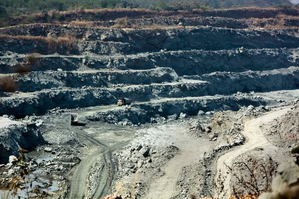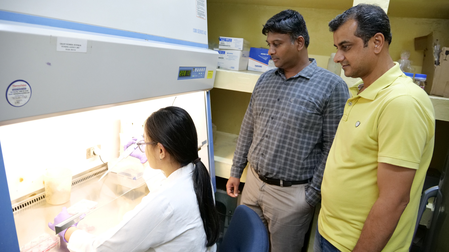
New Delhi, Dec 24 (IANS) A significant new deposit discovery has been made in and around the existing area of India’s Jaduguda Mines which will increase the life of an otherwise depleting mine by more than 50 years, according to the year-end review released by the Department of Atomic Energy on Tuesday.
Since last October, continued efforts of the Atomic Minerals Directorate for Exploration & Research (AMD) have resulted in an increase of 15,598 tonnes of uranium oxide resources in the states of Andhra Pradesh, Jharkhand, and Rajasthan. The total uranium oxide resource of the country is updated to 4,25,570 tonne U3O8, the review stated.
It also highlighted that the first two units of the indigenous nuclear reactors 700 MWe PHWR at Kakrapar, Gujarat (KAPS – 3 & 4) have started commercial operation in FY 2023-24. Rawatbhata Atomic Power Project (RAPP) Unit-7, the 3rd indigenous 700 MWe PHWR in a series of 16 sanctioned reactors, has completed initial fuel loading and achieved First Criticality.
Closed fuel cycle being the cornerstone of the Indian nuclear power programme, the country’s first Prototype Fast Breeder Reactor (PFBR 500 MWe) had a very eventful year achieving many of the milestones, including primary sodium filling in the main vessel, purification of the filled sodium, and commissioning of all the four sodium pumps (2 primary sodium Pumps & 2 secondary sodium pumps), the official statement said.
It further stated that operator Nuclear Power Corporation of India and National Thermal Power Corporation (NTPC) have signed a supplementary joint venture agreement to develop nuclear power facilities in the country. The JV named ASHVINI will build, own, and operate nuclear power plants, including the upcoming 4×700 MWe PHWR Mahi-Banswara Rajasthan Atomic Power Project.
In the area of health care, the Department of Atomic Energy (DAE) contributes to affordable cancer care and indigenous development, commercialisation, and supply of radiopharmaceuticals. In this mission, Tata Memorial Centre (TMC), Board of Radiation & Isotope Technology (BRIT), Variable Energy Cyclotron Centre (VECC), HWB, BARC and IGCAR have played a crucial role, the statement pointed out.
The National Cancer Grid, now a 362-member network across the country, spearheaded by Tata Memorial Centre, treats approximately 60 per cent of the country’s total cancer load. The NCG has supported the establishment of SEACan Grid – a network of countries/cancer centres in the WHO South East Asia region which is being coordinated by the WHO South-East Asia Regional Office. The aim is to share best practices developed by the NCG with other South-East Asia Region countries to improve cancer control in Southeast Asia.
Several new facilities have been inaugurated at HBCH&RC, Punjab which include a CT scan, PET Scan, state-of-the-art Operation Theatre ‘SUSHRUTA II’ and a fully equipped Nuclear Imaging Department.
BARC’s patented nitric oxide (NOx) releasing dressing for wound healing in diabetic foot ulcer patients, which was earlier transferred to Cologenesis Private Ltd for commercialisation, completed the Phase III clinical trials and received regulatory approvals from the Drug Controller General of India for launching the product. NOx-releasing wound dressing is the first of its kind in India approved for use and expected to benefit a large number of diabetic patients.
Towards indigenisation, commercialization and supply of radiopharmaceuticals, HWB is regularly supplying Deuterium Depleted Water (DDW) of around 125 ppm deuterium in the domestic market to healthcare industries. Recently, a DDW unit of 100 Te/Annum capacity located at HWP, Kota has been inaugurated.
As a part of the Platinum Jubilee year celebrations of the Department, the indigenously built Major Atmospheric Cherenkov Experiment (MACE) Observatory at Hanle, Ladakh was inaugurated on October 4. MACE is the largest imaging Cherenkov telescope in Asia located at the highest altitude of about 4300 m in the world, the statement added.
–IANS
sps/vd






